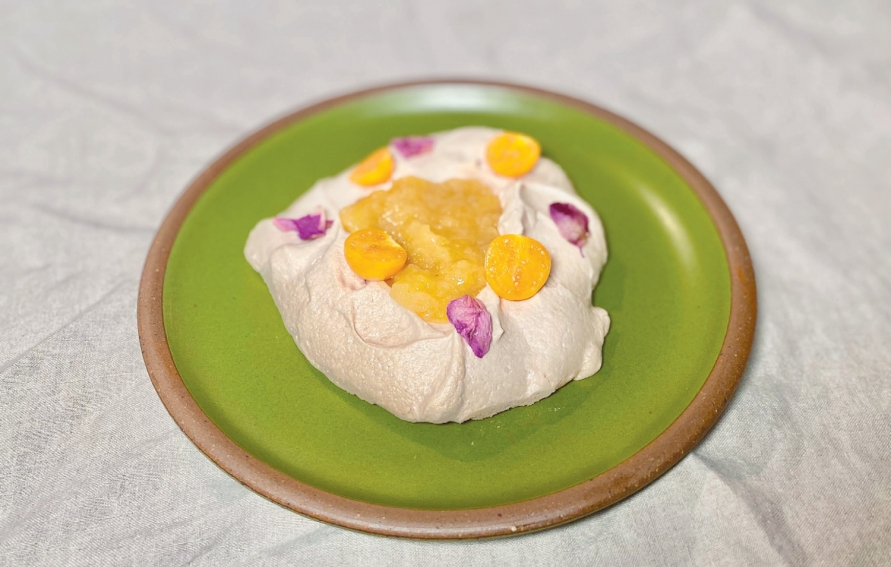Ingredients
- ¾ cup aquafaba (water from 1 can garbanzo beans), chilled
- 1 teaspoon cream of tartar
- ½ teaspoon vanilla
- ½ teaspoon rose water
- ¾ cup caster sugar*
- 1 teaspoon rose powder (optional, for color)
- ½ teaspoon agar powder or 1 teaspoon tapioca or cornstarch
- ½ cup cashew or other nut milk
- 1 cup mango purée or jam
- 1 small lemon for zest
- Sliced fruit and berries, for garnish
Preparation
Make curd: in a small saucepan, bring the milk and agar or starch to a low simmer. Cook, stirring occasionally, for about 3 minutes. Pull off the heat. Add in mango and zest, mixing thoroughly. Chill for at least 3 hours.
Preheat oven to 250° F. Line a baking sheet with parchment paper. Make the meringue: in a large bowl, combine aquafaba and cream of tartar. Using a mixer with a whisk attachment, beat until soft peaks start to form. Add in vanilla and rose water, then slowly add in sugar and rose powder, 1 tablespoonful at a time, until glossy peaks form.
Spoon out your mixture onto the baking sheet in 5-inch rounds. Leave at least 4 inches between them; they will spread slightly.
Cook for 90 minutes, without opening the door. Turn off the oven. Do NOT open the door even though you want to. Let cool for 60 minutes in the oven. Remove and completely cool on the counter.
Once completely cool and ready to serve, spoon a dollop of the chilled curd on top of each meringue round and garnish with fresh fruit. These are best consumed on the same day they are baked, and with a cup of tea. Note that unfilled pavlova will keep in an airtight container or in a closed oven overnight.
*Caster sugar can be challenging to source in the United States. To make your own, pulse granulated sugar in a food processor until very fine, but not as fine as powdered sugar.




